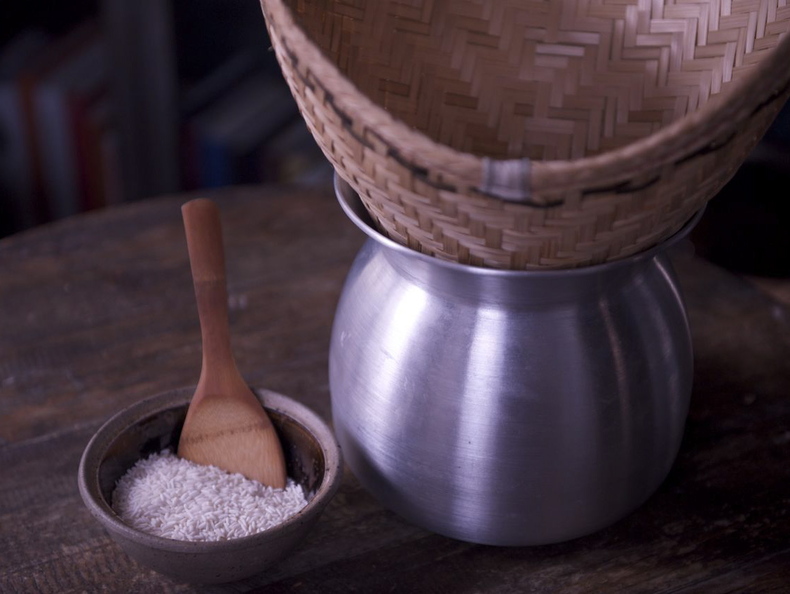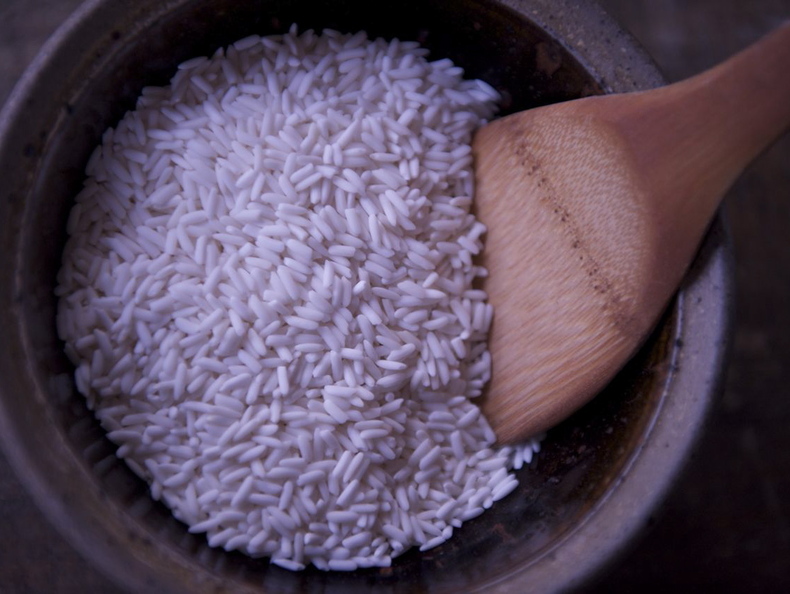1.5.10 Sticky Situation

Stock up on some cans of curry paste (the Masaman is flawless, served with a cucumber relish—recipe soon, I promise) and of coconut milk, and grab a bottle of fish sauce and you are in business for an easy, quick and delicious meal. You can simply follow the instructions on the can! I have gone to the effort of making my own curry pastes and, though they are quite good, I can't really say they're any better than the Maesri brand. But this post is really to tell you that making your own sticky rice at home is no big deal. All you need is the right steamer and the right rice.

Sticky Rice
- — 3 cups Thai sticky rice
You will need to soak the rice overnight. (This imparts flavor, but if you insist on skipping this step, you can soak it in warm water for just a couple of hours.) Soak it in a bowl big enough that you can add about 3 inches of room-temperature water on top of the rice.
Fill the metal rice cooking pot with water about halfway up, just not so high that it will touch the bottom of the basket. The rice shouldn't touch the water. Place the steamer basket into the pot.
Now, drain the rice and dump it into the steamer basket. Cover the top of the basket with a clean dish towel (be careful the draped ends don't get close to the burner) and set to boil. The rice needs to steam this way for about half an hour. Make sure your pot does not run out of water!
You can use a wooden spoon or a little rice paddle like mine, above, to turn the rice a bit. (It's not really necessary but I like to poke at my rice occasionally to see how it's getting done.) Serve the rice warm or at room temperature, directly from the basket or from a covered bowl.
 Download Recipe
Download Recipe






4 Comments